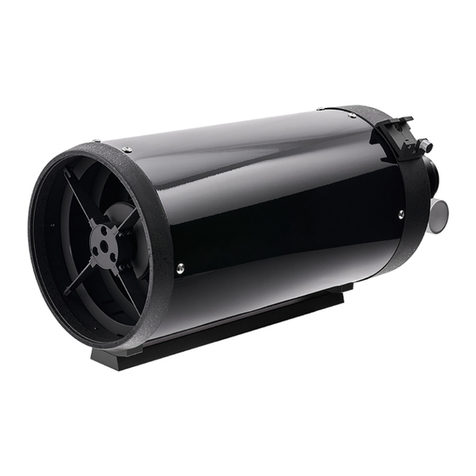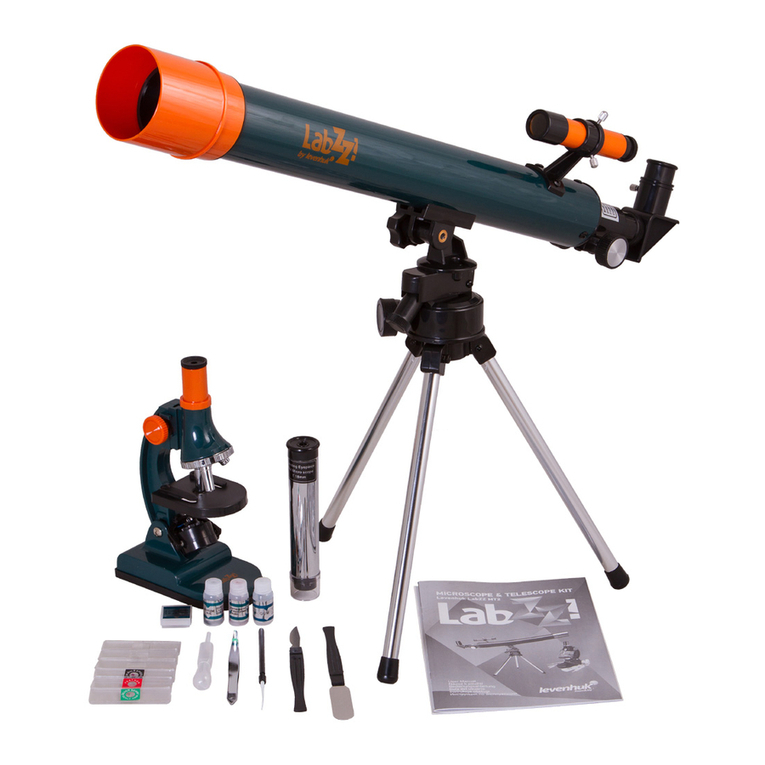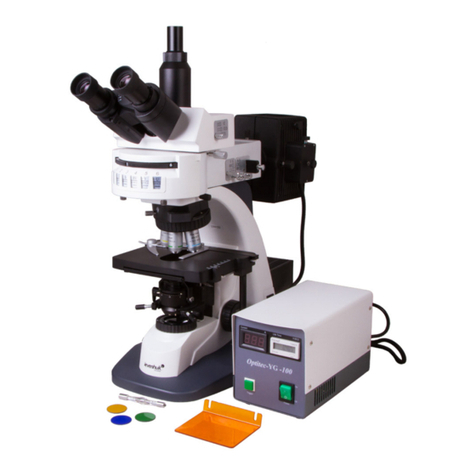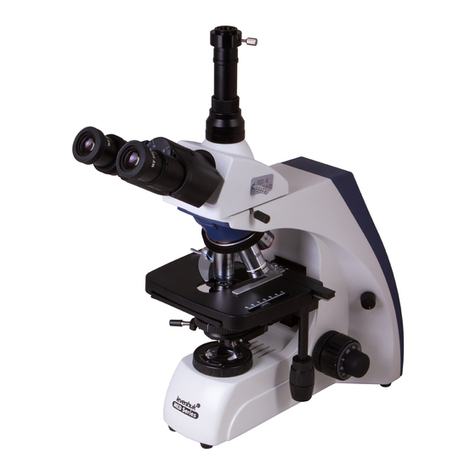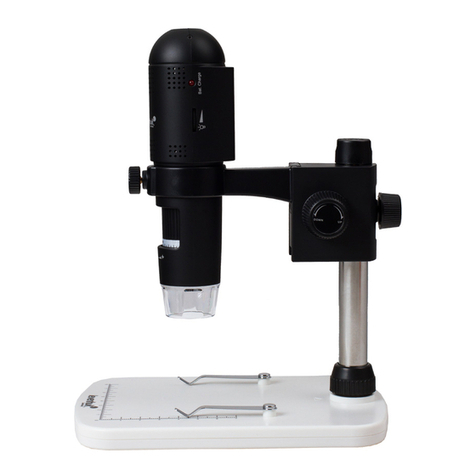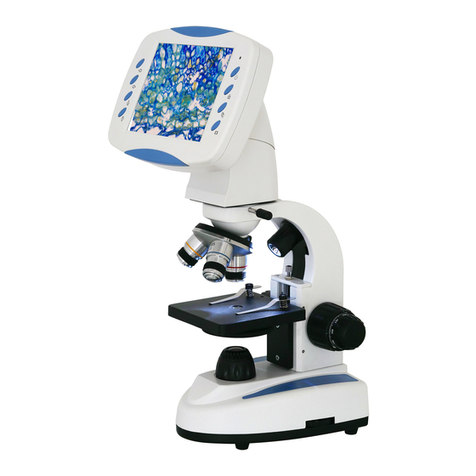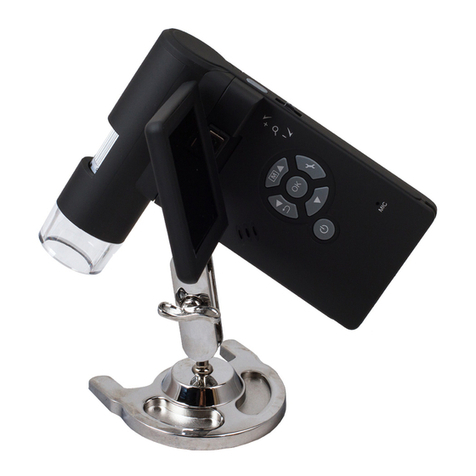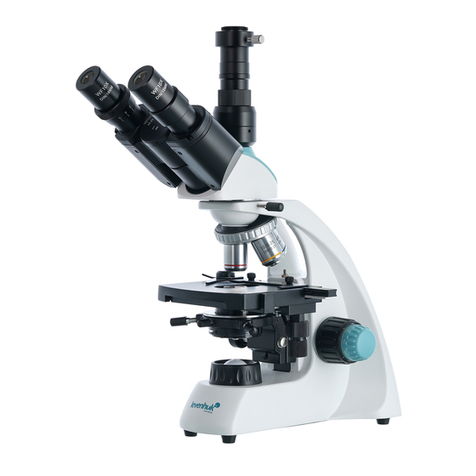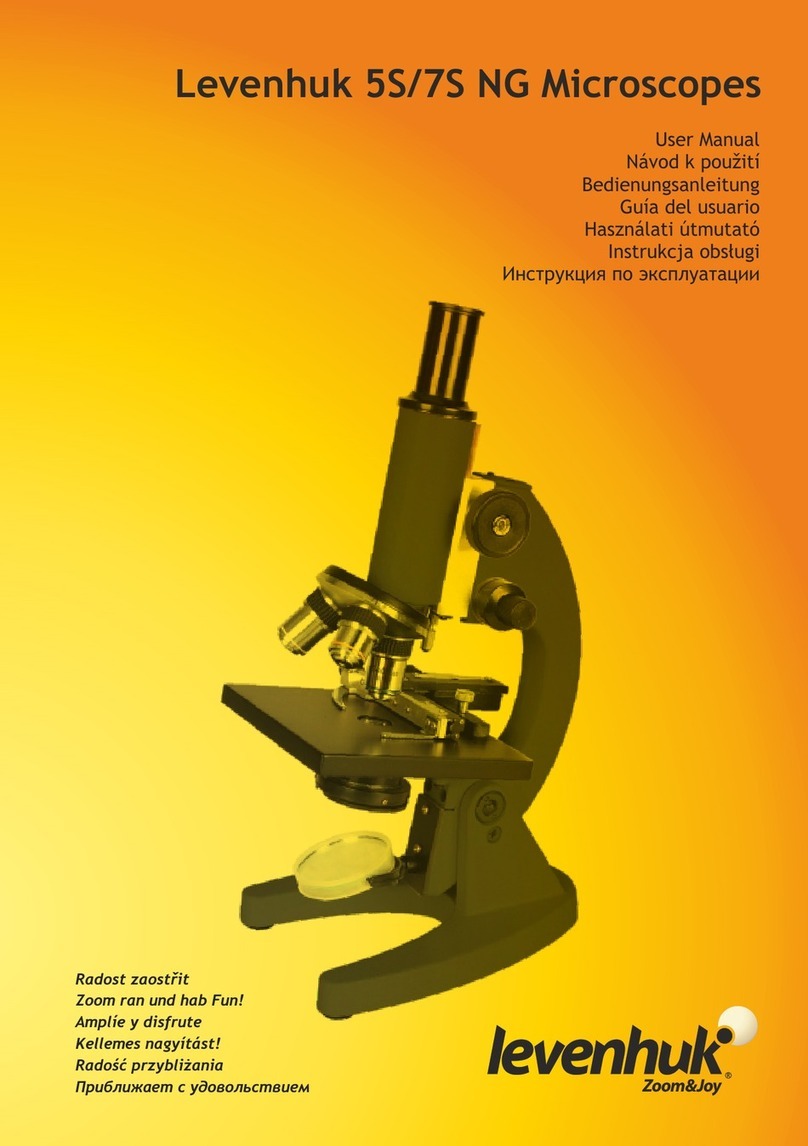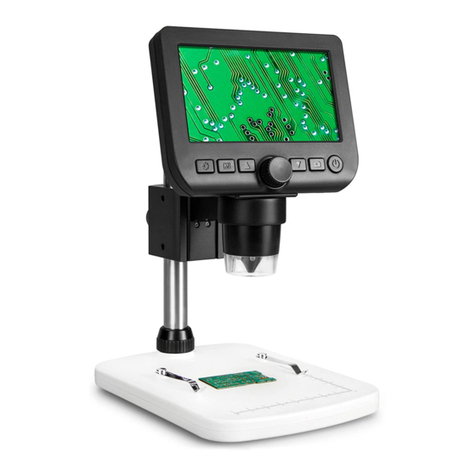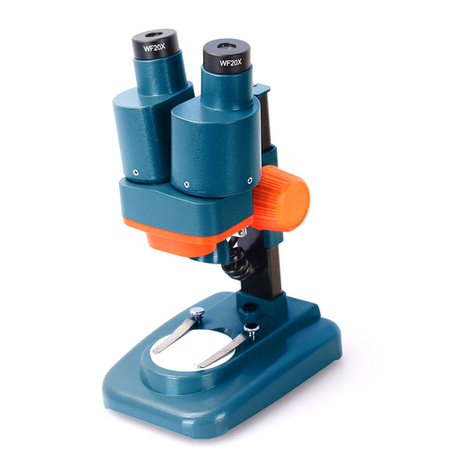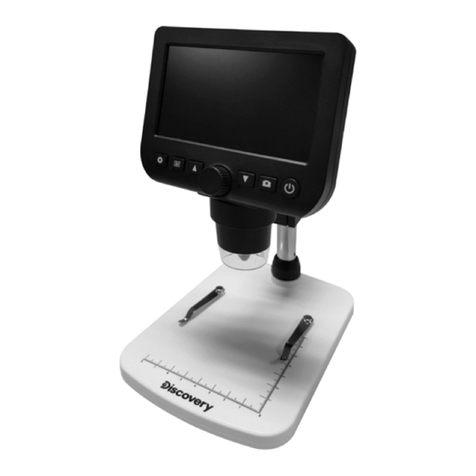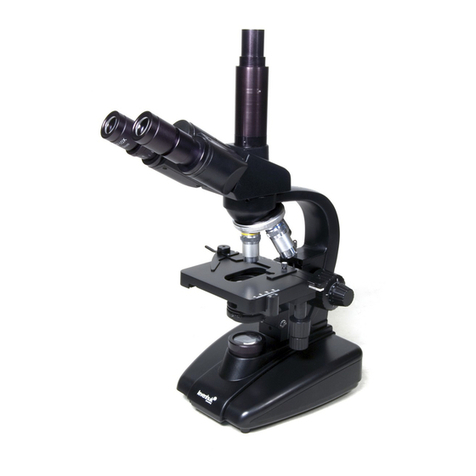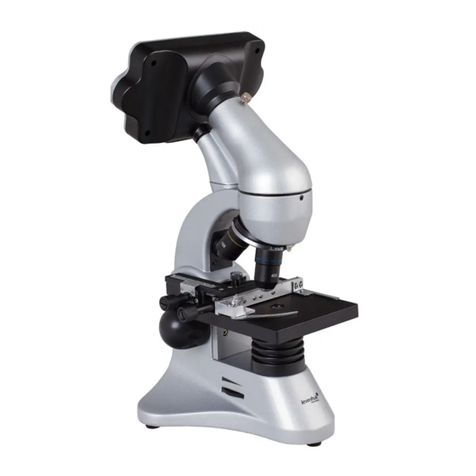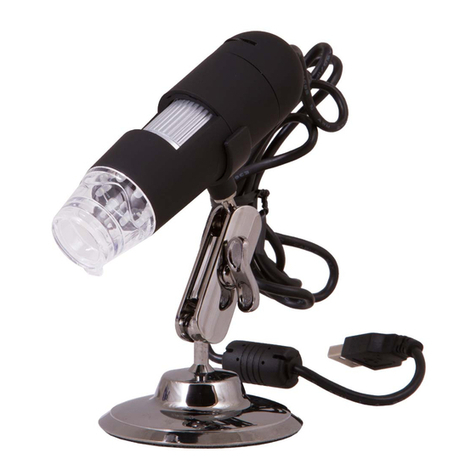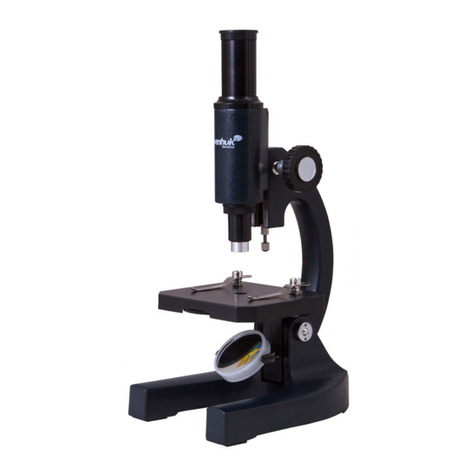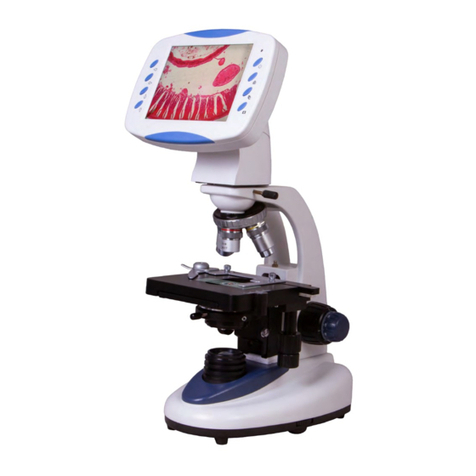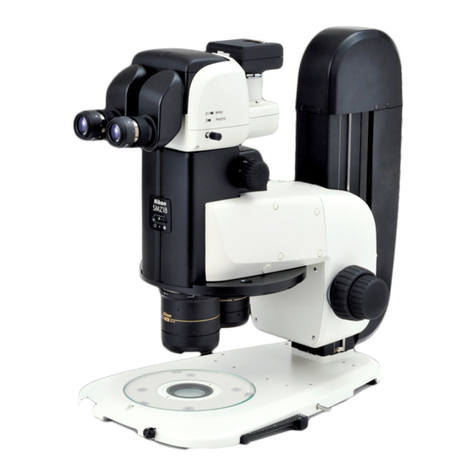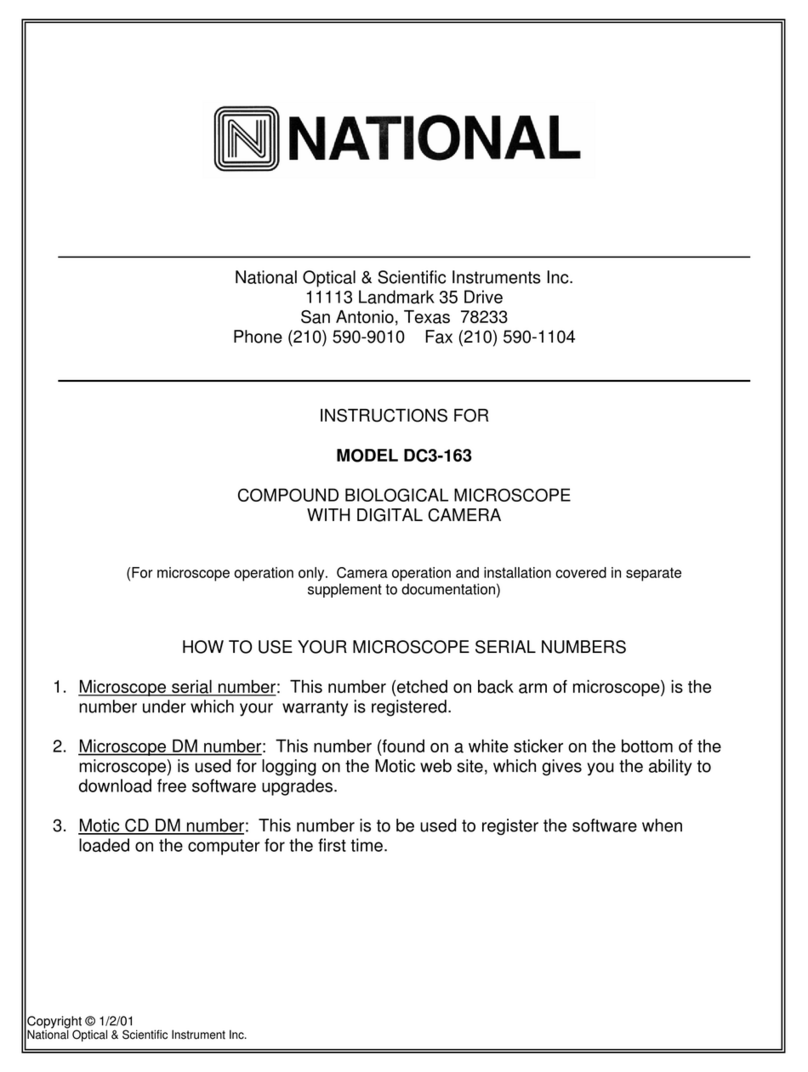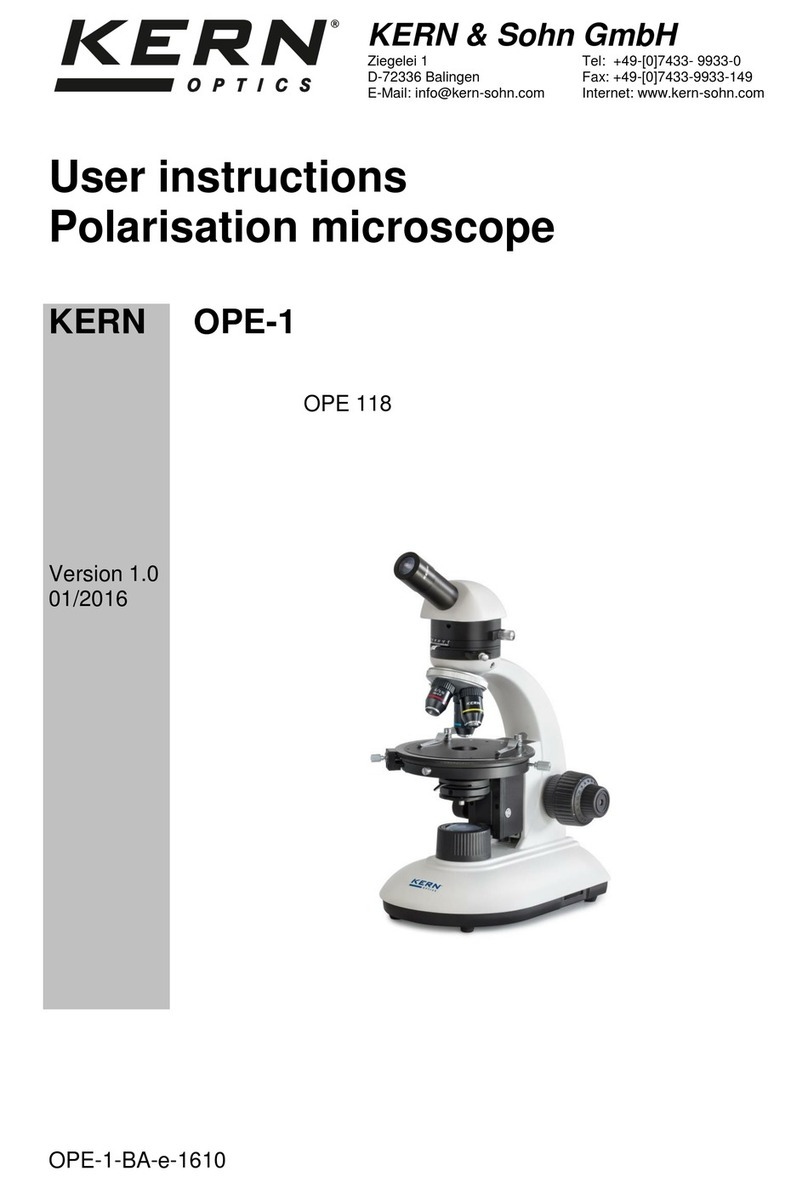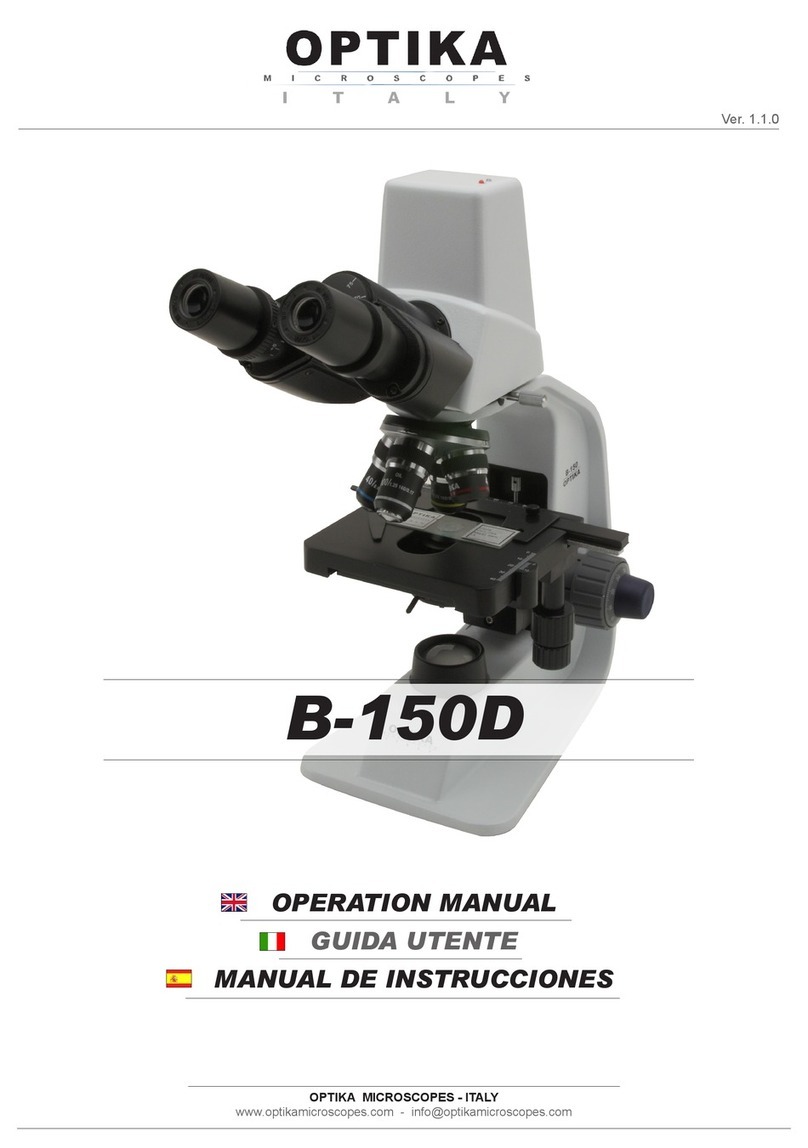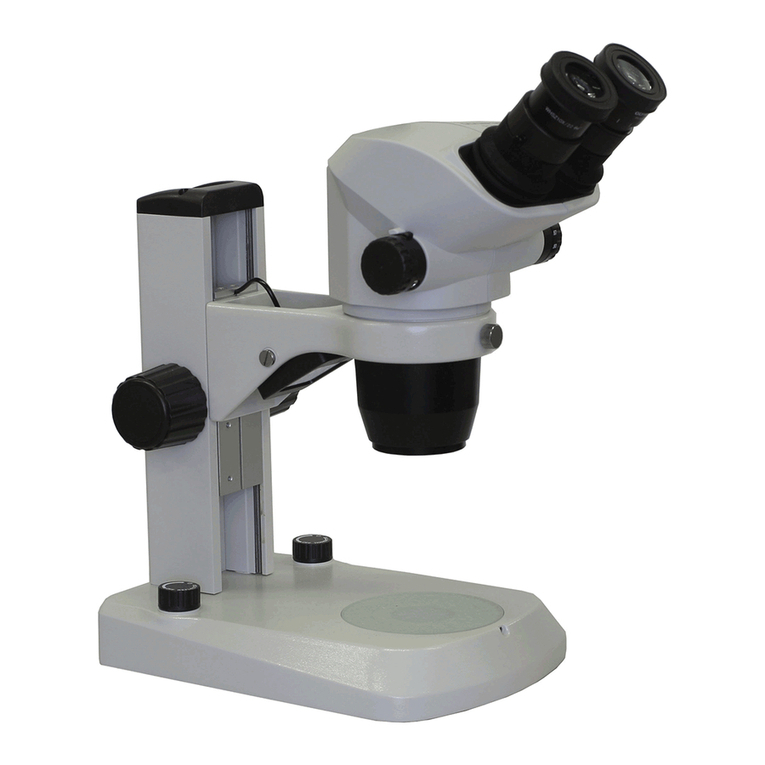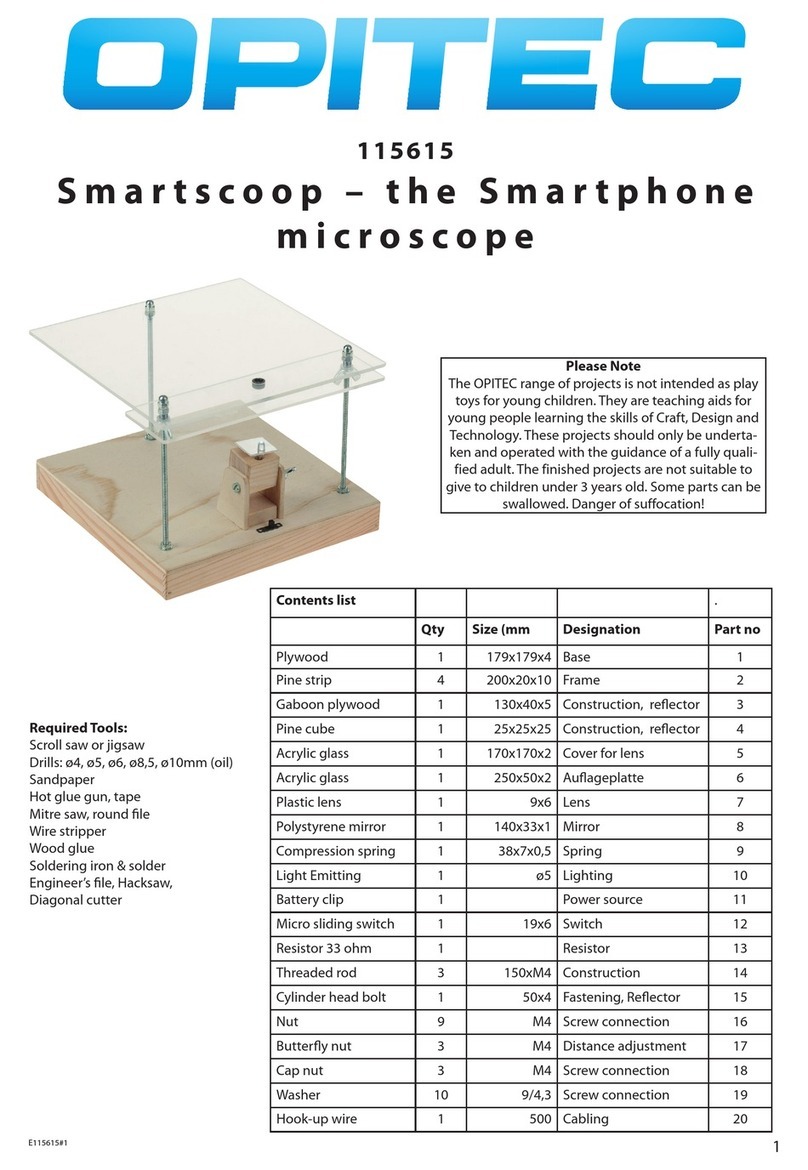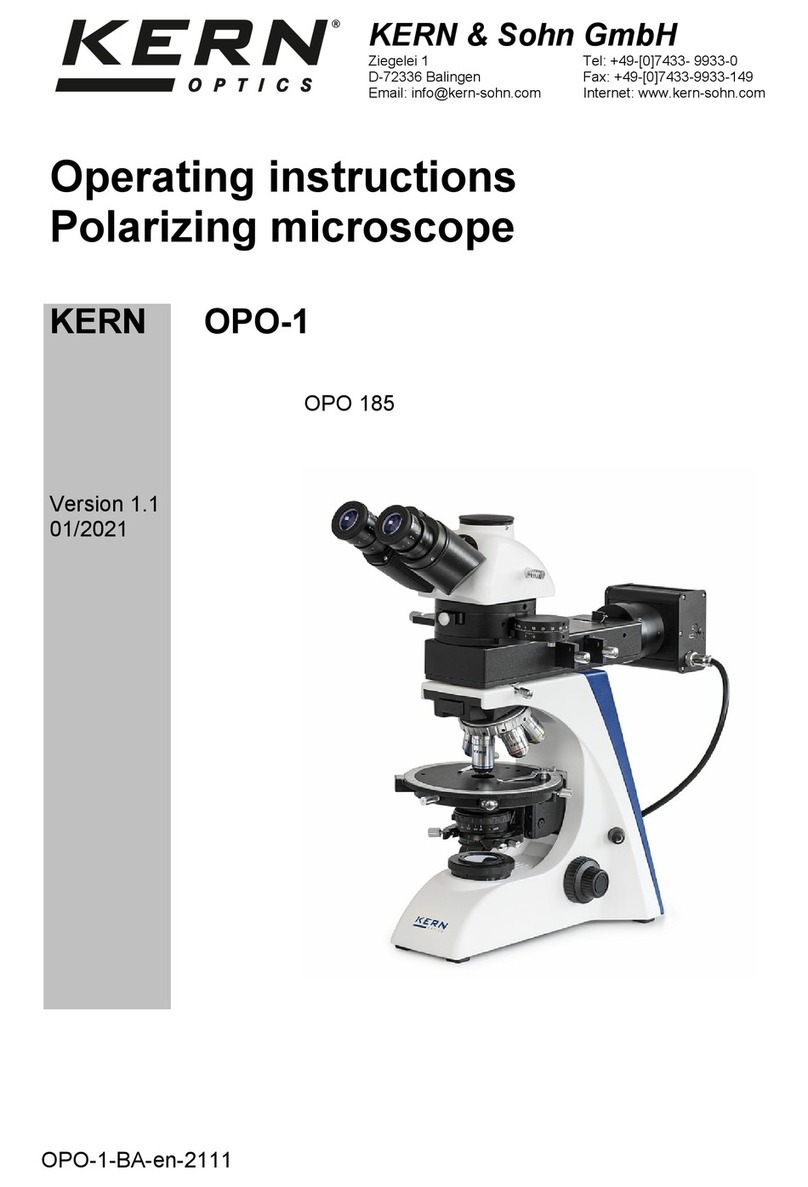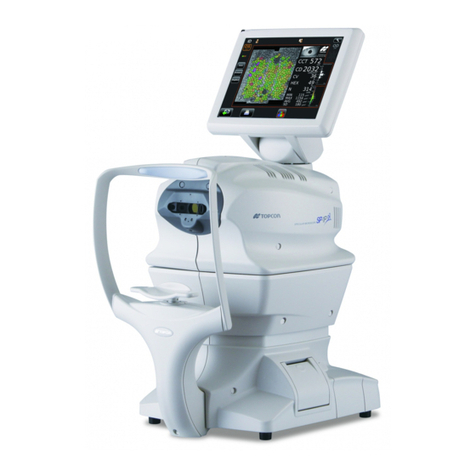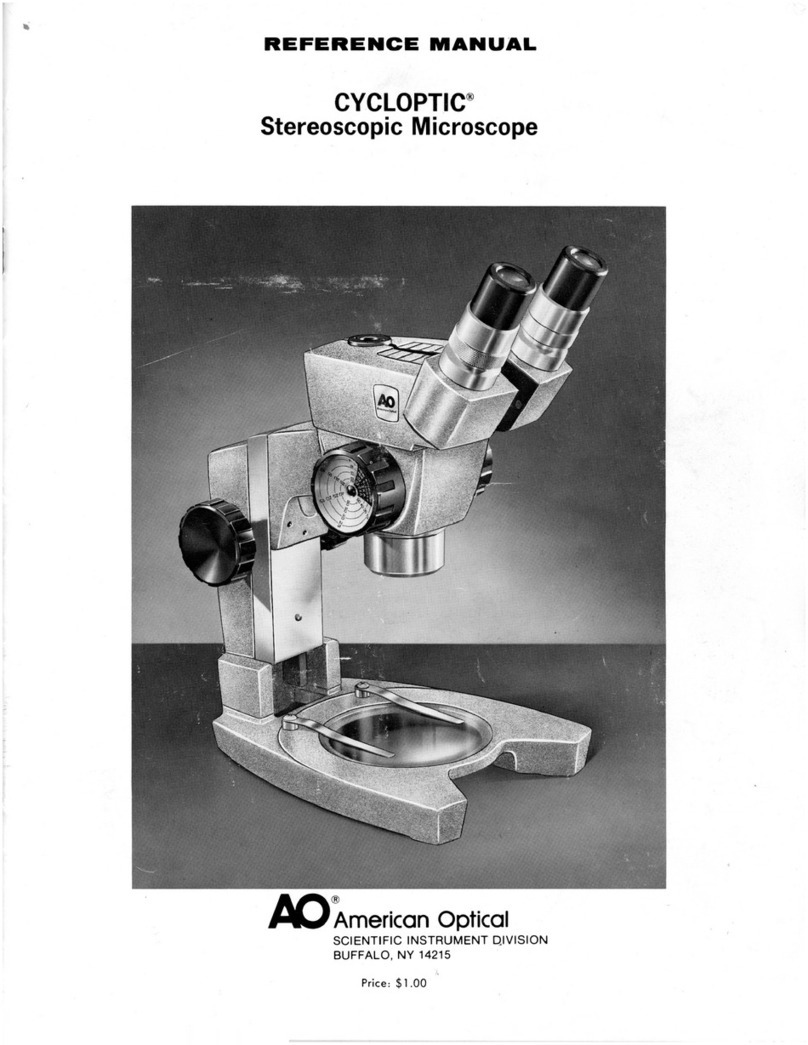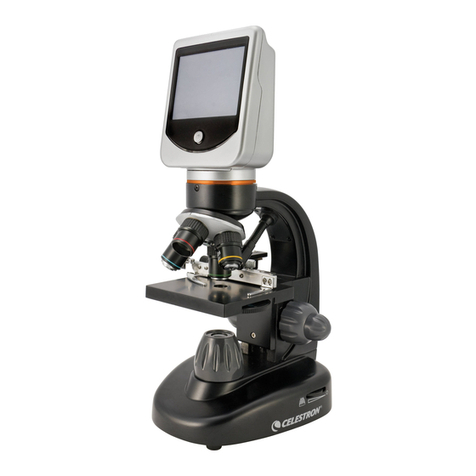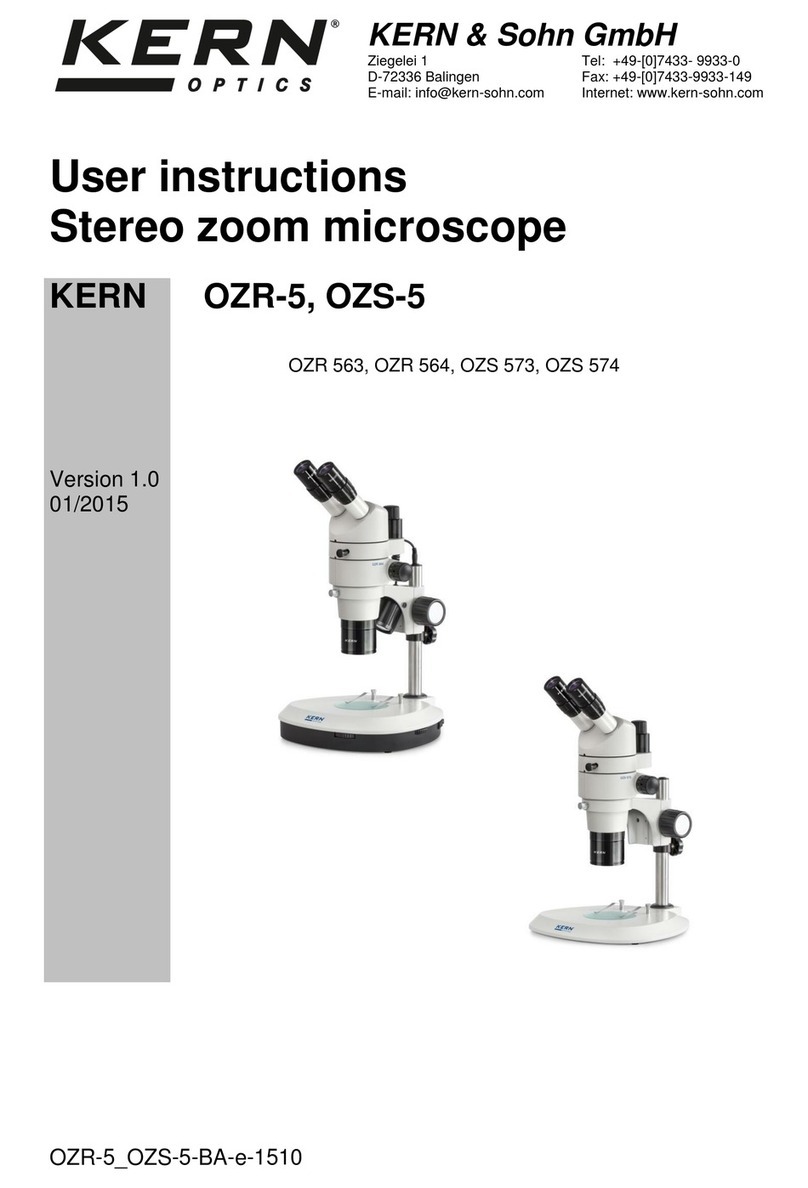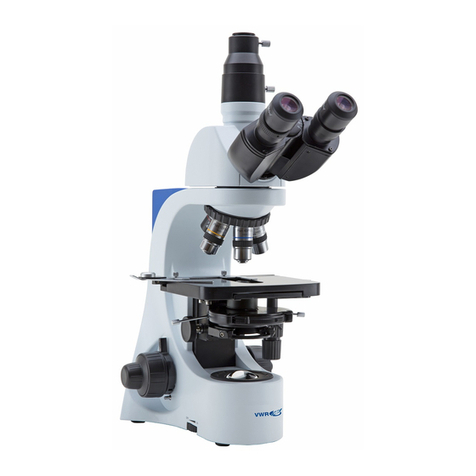
2L 2DL 2L PLUS
Type biological digital biological
Magnication, x 40–400 40–400 64–640
Head monocular, rotatable 360°, inclined 45°
Optics material optical glass
Body material plastic plastic metal
Eyepiece tube diameter, mm 23.2
Eyepieces WF10x WF10x WF16x
Revolving nosepiece 3 objectives
Objectives 4, 10, 40 4, 10, 40 4, 10, 40s (spring)
Stage, mm 90x90, with specimen holders
Stage moving rage, mm 0–15, vertical 0–15, vertical 0–8, vertical
Focusing coarse
Condenser NA 0.65, diaphragm disk (6 apertures)
Illumination upper and lower LED illumination with adjustable brightness
Power source 220V 50Hz, or 3* batteries
Levenhuk K50 experiment kit yes
Digital camera no yes no
Specications
Levenhuk reserves the right to modify or discontinue any product without prior notice.
Notes:
1. The Levenhuk K50 experiment kit is supplied without an individual plastic case.
2. Batteries might be pre-installed in the battery compartment by the manufacturer.
Care and maintenance
• Never, under any circumstances, look directly at the Sun, another bright source of light or at a laser
through this device, as this may cause PERMANENT RETINAL DAMAGE and may lead to BLINDNESS.
• Take necessary precautions when using the device with children or others who have not read or who
do not fully understand these instructions.
• Aer unpacking your microscope and before using it for the rst time check for integrity and durability
of every component and connection.
• Do not try to disassemble the device on your own for any reason. For repairs and cleaning of any kind, please
contact your local specialized service center.
• Protect the device from sudden impact and excessive mechanical force. Do not apply excessive pressure when
adjusting focus. Do not overtighten the locking screws.
• Do not touch the optical surfaces with your ngers. To clean the device exterior, use only special cleaning
wipes and special optics cleaning tools from Levenhuk. Do not use any corrosive or acetone-based uids
to clean the optics.
• Abrasive particles, such as sand, should not be wiped o lenses, but instead blown o or brushed away
with a so brush.
• Do not use the device for lengthy periods of time, or leave it unattended in direct sunlight. Keep the device away
from water and high humidity.
• Be careful during your observations, always replace the dust cover aer you are nished with observations
to protect the device from dust and stains.
• If you are not using your microscope for extended periods of time, store the objective lenses and eyepieces
separately from the microscope.
• Store the device in a dry, cool place away from hazardous acids and other chemicals, away from heaters, open
re and other sources of high temperatures.
5
